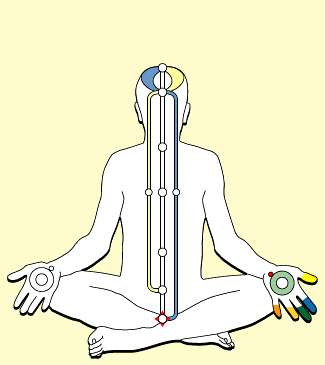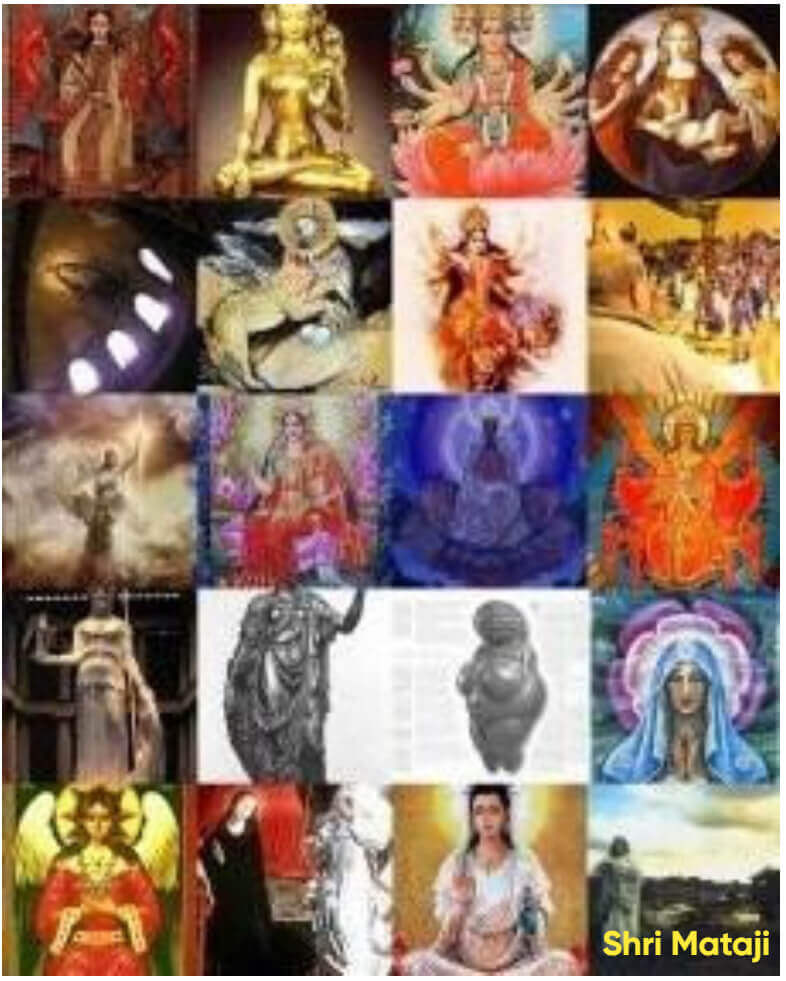The Mesoamerican Sacrum Bone: A Cross-Cultural Gateway to the Otherworld

Across continents and centuries, the sacrum bone has whispered the same sacred truth. Mesoamerican shamans called it a doorway to the otherworld. Jews named it Luz—the bone of resurrection. Muslims revered it as ajbu adh-dhanab, the indestructible seed of rebirth. Hindus knew it as the seat of Kundalini, the divine energy resting in the Muladhara chakra. Shri Mataji confirmed its sanctity: the sacrum is not symbolic—it is literal. The sacred bone is the spine’s sanctum, the gateway to Self-realization and the cool breeze of the Holy Spirit. The sacrum bone is revered across cultures as the sacred gateway to resurrection, divine energy, and spiritual awakening—its truth lives within every seeker’s spine.
Abstract
This paper explores the profound and widespread reverence for the sacrum bone across disparate cultures, seeking to understand why societies distant from one another have independently designated it as "sacred" or "holy." Beginning with an analysis of the sacrum's role in Mesoamerican cosmology as a "doorway to the otherworld," this research expands to encompass Judeo-Christian, Islamic, ancient Egyptian, and Hindu traditions. By examining the anatomical and physiological properties of the sacrum alongside its symbolic interpretations, this paper argues that the bone's sacred status is not a product of cultural diffusion but rather an emergent property of shared human observation and symbolic logic. The sacrum's unique combination of durability, its crucial role in supporting the human frame, and its proximity to the reproductive organs and major nerve plexuses has made it a natural focal point for beliefs surrounding life, death, resurrection, and spiritual transformation. Ultimately, this paper concludes that the sacrum's sacredness is a testament to the universal human tendency to find spiritual significance in the material realities of the body.
Table of Contents
- Introduction
- The Mesoamerican Context: A Doorway to the Otherworld
- Cross-Cultural Perspectives on the Sacred Bone
- Anatomical and Symbolic Foundations of Sacredness
- Synthesis and Conclusion
- References
Introduction
The human body, often referred to as a "sacred vessel," has long been a source of symbolic meaning and religious ritual. While the significance of organs like the heart or the skull is widely recognized, the sacrum—a large, triangular bone at the base of the spine—holds a unique and enigmatic status across numerous cultures. The very name "sacrum" is a direct translation of the Latin os sacrum, meaning "sacred bone," a term that itself derives from the Greek hieron osteon[1]. This etymology, dating back to the time of Hippocrates, raises a fundamental question: why have societies as diverse as those in ancient Mesoamerica, Egypt, and the Near East independently arrived at the conclusion that this particular bone is sacred? This paper seeks to answer this question by exploring the cross-cultural significance of the sacrum, beginning with its role in Mesoamerican cosmology and expanding to a broader comparative analysis.
The Mesoamerican Context: A Doorway to the Otherworld
In Mesoamerica, the sacrum bone was not merely an anatomical structure but a potent symbol deeply embedded in cosmological and religious beliefs. As Brian Stross argues in his seminal work, "The Mesoamerican Sacrum Bone: Doorway to the Otherworld," the sacrum was considered a focal point of spiritual energy and a gateway between worlds[2]. Stross notes that in some Indigenous Mesoamerican languages, the word for the sacrum is the same as the word for "sacred" or "deity," highlighting its profound cultural importance. This sacredness was linked to the bone's perceived connection to reproduction, fertility, and reincarnation. Its location near the reproductive organs and its role in supporting the spine made it a natural symbol of life-giving power. Furthermore, the sacrum was seen as a portal through which shamans, spirits, and deities could traverse different levels of the cosmos. This belief is reflected in Mesoamerican iconography, where the sacrum is often depicted as a stylized skull or face, further emphasizing its connection to the spiritual realm.
Cross-Cultural Perspectives on the Sacred Bone
The reverence for the sacrum is not unique to Mesoamerica. A survey of other cultures reveals a remarkable convergence of beliefs surrounding this bone.
Judeo-Christian and Islamic Traditions
In Jewish tradition, the sacrum is known as the "Luz" bone, an indestructible nucleus from which the body will be resurrected. The Talmud recounts a story in which the Roman Emperor Hadrian tests the Luz bone's indestructibility, subjecting it to fire, water, and crushing, only to find it intact[3]. Similarly, in Islamic tradition, the coccyx, or 'ajbu adh-dhanab, is believed to be the seed of resurrection. The Prophet Muhammad is quoted in the Sahih al-Bukhari as saying: "Everything of the human body will decay except the little bone at the end of the coccyx, and from that bone Allah will reconstruct the whole body"[4].
Ancient Egyptian Beliefs
In ancient Egypt, the sacrum was associated with the Djed pillar, a symbol of the backbone of Osiris, the god of the afterlife. The Djed pillar represented stability, endurance, and resurrection[5]. According to Wallis Budge, the Djed is the oldest symbol of Osiris, and symbolizes his backbone and his body in general. The annual "Raising the Djed" ceremony symbolized the resurrection of Osiris and the renewal of life. The connection between the sacrum and the Djed pillar is further reinforced by the myth of Osiris, in which his body is dismembered and then reassembled, with his spine playing a central role in his rebirth.
Hindu and Buddhist Traditions
In Hindu and Buddhist traditions, the sacrum is the seat of the Muladhara chakra, the root chakra where the dormant spiritual energy of Kundalini is believed to reside. The awakening of Kundalini, which rises from the sacrum and ascends through the spine, is a central goal of many yogic practices, leading to spiritual enlightenment and self-realization[6]. Shri Mataji Nirmala Devi, the founder of Sahaja Yoga, has extensively taught about the sacrum's role as the abode of the Kundalini, describing it as the "sacred bone" that holds the key to our spiritual potential[7].
— Shri Mataji, Cairo, Egypt, 28 October 1996
— Shri Mataji, Hampstead, UK, 23 October 1980
— Shri Mataji, Melboune, Australia, 6 March 1990
— Shri Mataji, Kyiv, Ukraine, 6 August 1992
— Shri Mataji, Paris, France, 17 June 1983
— Shri Mataji, Houston, USA, 22 September 1983
— Shri Mataji Nirmala Devi, Paris, France, 16 April 1980
Anatomical and Symbolic Foundations of Sacredness
The cross-cultural reverence for the sacrum can be attributed to a combination of its unique anatomical properties and the symbolic interpretations they inspire.
Anatomical Properties
The sacrum is one of the largest and strongest bones in the body, forming a crucial link between the spine and the pelvis. Its five fused vertebrae create a remarkably durable structure that can withstand immense pressure and is often one of the last bones to decay after death[8]. This inherent strength and resilience would have been readily apparent to ancient peoples, lending credence to the belief in its indestructibility. The sacrum is comprised of five fused vertebrae configured as an inverted triangular bone that is concave anteriorly and convex posteriorly. The fusion of the vertebrae and the large size of the sacrum form an ideal base that allows it to support the weight of the entire body.
Symbolic Interpretations
The sacrum's anatomical features are ripe for symbolic interpretation. Its location at the base of the spine, the "pillar" of the body, and its proximity to the reproductive organs naturally associate it with concepts of life, creation, and stability. The sacral canal, which houses the lower end of the spinal cord and a network of nerves, provides a physical basis for the belief that the sacrum is a center of spiritual energy and consciousness. The eight holes in the sacrum, which allow for the passage of spinal nerves, have also been interpreted as gateways or portals to the spiritual realm.
Synthesis and Conclusion
The widespread reverence for the sacrum bone across diverse and distant cultures is a testament to the power of shared human experience and observation. While the specific myths and rituals may vary, the underlying reasons for the sacrum's sacred status are remarkably consistent. Its anatomical properties—its strength, durability, and central location—make it a natural symbol of stability, endurance, and life-giving power. Its connection to the reproductive organs and the nervous system provides a physical basis for beliefs about its role in creation, resurrection, and spiritual awakening.
The evidence presented demonstrates that the sacrum's sacred designation emerges from observational logic rather than cultural diffusion. Ancient peoples, through careful observation of human anatomy and physiology, recognized the sacrum's unique properties: its exceptional durability, its crucial structural role, its proximity to organs essential for reproduction, and its connection to the nervous system. These observable characteristics naturally led to symbolic interpretations that associated the bone with concepts of permanence, stability, life force, and spiritual energy.
Ultimately, the sacrum's sacredness is not a matter of cultural diffusion but rather a product of a universal human tendency to find profound meaning in the elegant design of the human body. The sacrum, as the "sacred bone," serves as a powerful reminder that the gateway to the otherworld may lie not in some distant realm, but within ourselves. This convergence across cultures suggests that certain aspects of human spiritual understanding may be grounded in the very architecture of our physical being, making the sacred not something imposed from without, but something discovered from within.
References
[1] Ojumah, N., & Loukas, M. (2018). "The Intriguing History of the Term Sacrum." The Spine Scholar, 2(1), 17-18.[2] Stross, B. "THE MESOAMERICAN SACRUM BONE: DOORWAY TO THE OTHERWORLD." FAMSI Research.
[3] "On the Day of Judgment, the Resurrection will be from the coccyx." Adi Shakti.
[4] "Sahih al-Bukhari 4814." Sunnah.com.
[5] "The Concept of the Djed Pillar." Pyramid of Man.
[6] "The Chakra Of Mooladhara." Divine Sahajyog.
[7] "Mystery Of The Sacrum And Kundalini." Amruta.org.
[8] Sattar, M. H., & Guthrie, S. T. (2023). "Anatomy, Back, Sacral Vertebrae." StatPearls, StatPearls Publishing.
Related Articles
Kukulcan's Return or Kundalini Goddess within?Hunbatz Men, Secrets of Mayan Science/Religion
On the Day of Judgment, Resurrection will be from Coccyx
The Mesoamerican Sacrum Bone


